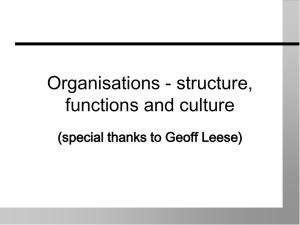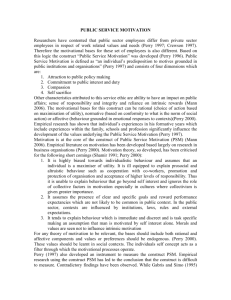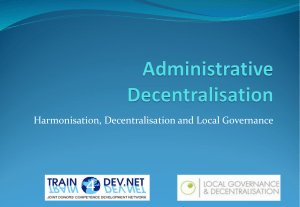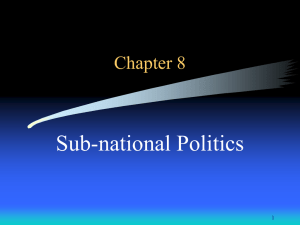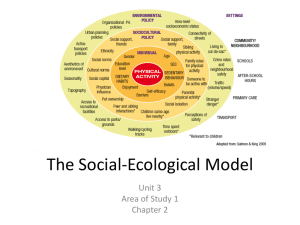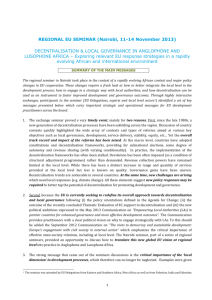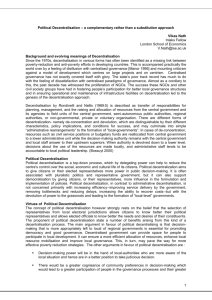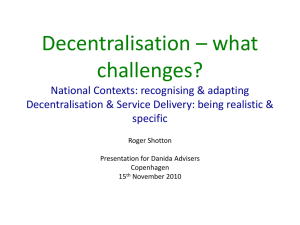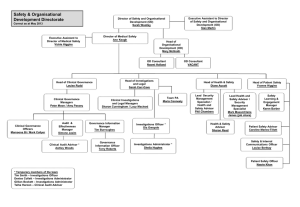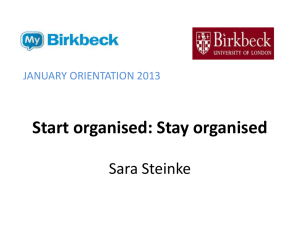File
advertisement
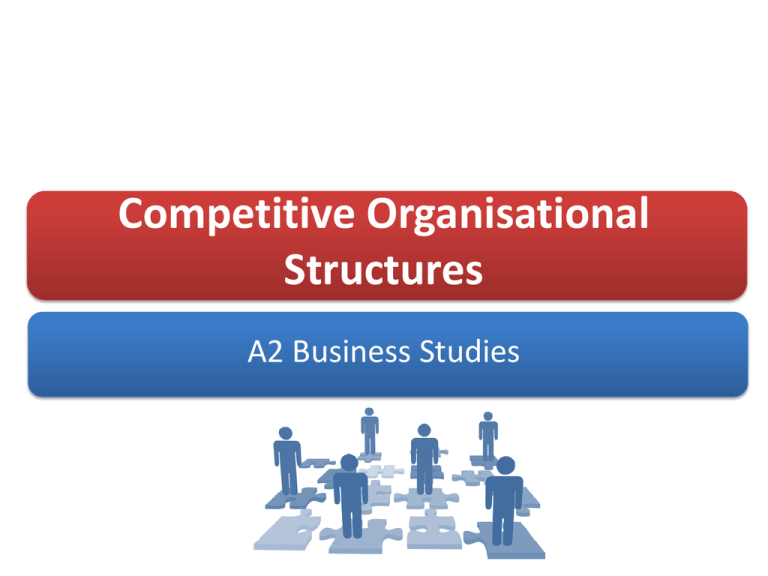
Competitive Organisational Structures A2 Business Studies Aims and Objectives Aim: • Understand methods of increasing competitiveness of organisational structures Objectives: • Define centralisation and decentralisation. • Explain how to delayer a business. • Analyse the effects of centralisation, decentralisation and delayering. • Evaluate each competitiveness method. Starter • Explain the different types of organisational structure. • Are some better suited to soft HRM rather than hard HRM? Organisational Structures in Larger Businesses In the modern day, organisational structures will change on a regular basis as it adapts to changes in the market. It is quite likely more than one structure will appear in a business. Organisational Structures in Larger Businesses e.g. • A hierarchical structure may be appropriate in finance for handling of sensitive data. • A matrix structure may be appropriate in marketing for running projects. • An informal structure may be used R&D where creativity is important. Judging Effectiveness of Structures Question to be asked of the case study: • How quickly are strategic decisions made? • Does the business operate at minimum efficient cost? • How effective are the channels of communication within the organisation? • Who is involved in the decision making process and are they the most appropriate people. Adapting to Improve Competitiveness Centralisation Decentralisation • Where the decision • Where the authority making authority is for decision-making concentrated amongst is delegated to a small number of senior managers at subordinates in the the top of the organisational organisational structure. structure. • E.g. McDonalds, Pizza • E.g. Tesco, Morrisons Hut AN: Centralisation & Decentralisation In groups sort the factors into advantages and disadvantages of centralisation and decentralisation. AN: Centralisation Benefits • Tighter control over day-to-day running of business, especially budgets. • Easier to achieve economies of scale. • Greater use of specialisation. • Quicker decision making. • Easier to implement common policies and practices. Disadvantages • More bureaucratic – often too many layers in hierarchy. • Lack of authority down the hierarchy may reduce manager motivation. • Customer service can suffer from flexibility and speed in local decision making. AN: Decentralisation Benefits • Decisions are made closer to the customer. • Improved level of customer service. • Consistent with aiming for a flatter hierarchy. • Should improve staff motivation. • Delegation increases flexibility allowing the business to adapt to market conditions better. Disadvantages • Decision making is not necessarily strategic. • More difficult to ensure consistent practices and policies. • Who provides strong leadership in a crisis? • Harder to achieve tighter financial control & EOS EV: Centralisation & Decentralisation • What does the success of either depend on? • The type of business! • Large franchises – centralisation for the need to keep tight control over franchisees. • Large LTDs and PLCs – decentralisation to ensure a motivated and empowered workforce. • Skills of managers and decision makers. • Competitors structures and actions. Delayering Removing levels in the organisational structure to create a leaner and more efficient organisation. Case Study: Aviva “Aviva is basically removing the regional layer between the individual countries and the group level top management. It is a positive in our view because it should lead to some cost saves and should also mean a simpler management structure.” AN: Delayering • Independently, note down: – Advantages of delayering – Disadvantages of delayering – Issues with delayering • In pairs, share your ideas. • As a group share your ideas. AN: Delayering Benefits Disadvantages • Indirect costs are reduced. • The motivation of workers may increase as they have more responsibility and power is delegated. • Those at the bottom of the structure may have good ideas on how to improve the business. Business may be better able to respond to market and consumer changes. • Valuable skills, and knowledge may be lost. • Loss of job security may affect motivation negatively. • Harder to implement with legislation – discrimination act. • Workload of mangers likely to increase increasing stress and possibly absenteeism and costs. • Training costs may be greater! EV: Delayering • What does the success of delayering depend on? • • • • • Relationship with trade unions Laws and legislations Effects on motivation How large the costs of training are The effectiveness and ability to cope with extra workload of managers

